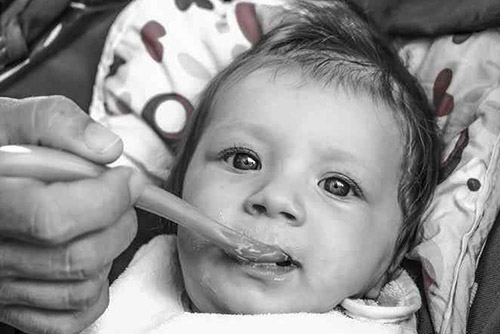
When you are a mother of three kids, you inadvertently end up gaining a lot of knowledge about babies, how to raise them, and what to feed them. Maybe this knowledge is what leads many of my friends to hit me up for baby advice every now and then. Recently when talking to a friend, he asked me about introducing solid food to a 6-month-old baby. Well, I’m going to tell you what I told him!
Changing the baby’s diet
Introducing your baby to solid food is an exciting milestone. I remember how impatient I was with my firstborn Krish. I wanted to get him on his new diet at 4 months but it was obvious he wasn’t ready yet. It was somewhere after he turned 5 months old, we knew he was ready to get started with solid foods. It’s said that you can start your child on solid food between 4 and 6 months but it honestly depends on the baby. While it was 5 months for Krish, it was 6 months for my other two boys.
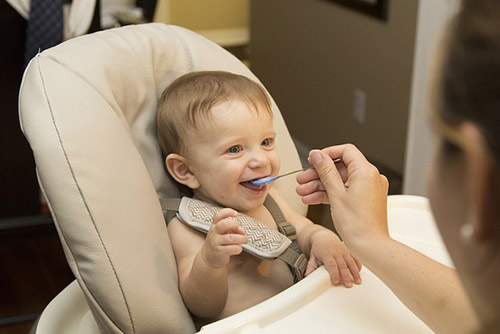
So how do you know when to get started? Well, you can always consult your doctor but there are also signs that clearly indicate the baby is ready for a new culinary journey. Here are some of the signs:
- The baby is hungry even after a good amount of feeding sessions.
- Baby can hold his head up and sit upright.
- The baby has lost the tongue-thrust reflex which automatically makes him/her push the food out of the mouth.
Six months is generally considered to be the perfect age to introduce the baby to solid food. I suggest consulting the doctor if you are unsure. That’s what we did with Krish.
What kind of food should you be feeding!
‘Solid food’ basically translates to pureed vegetables/fruits, oatmeal, porridge, and other foods that are soft and easy to swallow. It is at this phase, you will be introducing your baby to foods of different textures and tastes.
Here are some of the solid food options for 6-month-old babies that worked perfectly well for my kids:
- Cereals- This is the best way to transition from liquid diet to a semi-solid food diet for your baby. I always mixed cereal with water when feeding it to my kids. But you can also mix your breast milk with the cereal. Ensure the consistency is not too thick, it should be runny enough to slowly drip off the spoon.
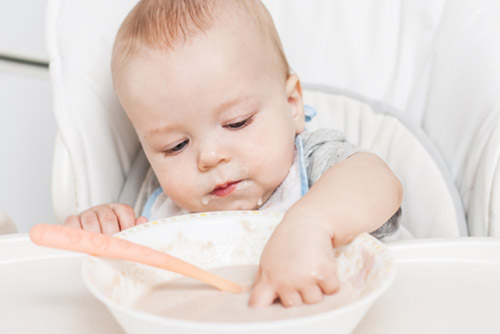
- Pureed vegetables- The best way to feed vegetables to your baby is to puree them. Steam vegetables such as sweet potatoes, carrots, peas, pumpkin and puree them till they are mushy.
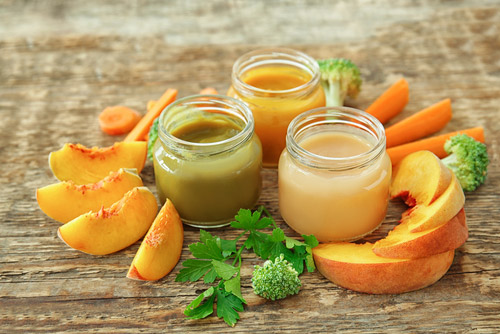
- Pureed fruits- Pureed fruits are not only filled with essential nutrients but they are also delicious. You can start off with fruits like apples, bananas, peach, pear, etc. Some fruits don’t puree easily, in that case, steam them a little longer and add a little more water while blending them.
- Vegetable broth- Make a broth using vegetables such as carrots, tomatoes, cabbage, broccoli, peas, beans etc and feed the broth to the baby. Ensure you rinse the vegetable thoroughly before boiling them and also, strain them properly.
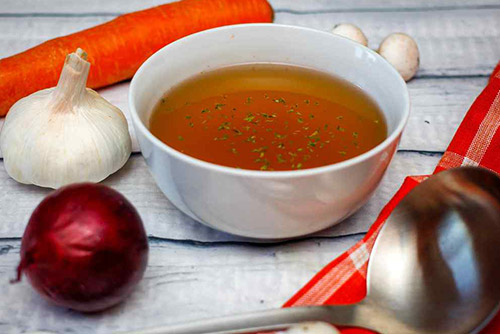
- Porridge- Though Krish wasn’t a fussy eater, he definitely favoured the rice porridge I made. It was only after Nitesh was born, did I try experimenting with oats porridge, the key is in grinding the oats to a fine flour-like texture before cooking it. Once the baby has crossed nine months, you can experiment with ragi and other grains.
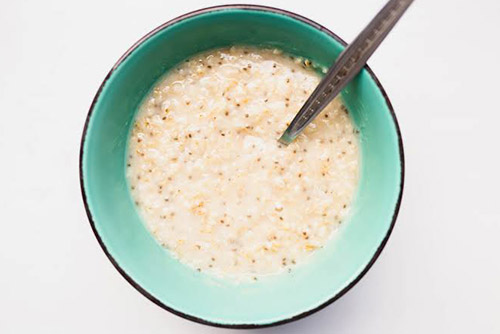
How to get started
So now that you know what food to feed your kid, it’s time we discussed the important question- How to get started? The tried and tested 3-day rule has worked for all my kids. Under this method, you try one fruit/vegetable/cereal type for three days and continue with it if there are no adverse reactions. Here is how to go about it:
- Start with one tablespoon on day 1 in the morning.
- Two tablespoons on day 2 in the morning and afternoon/night.
- Three tablespoons on day 3 morning and afternoon/night.
I used cereal as the first meal for all my kids. After five days, I started with fruit and vegetable puree. You can experiment and find out what works for your baby best.
The Don’ts
While it might seem like I had no trouble introducing solid food to my babies, I almost made a grave mistake the first time. When Krish was close to 7 months, I decided that I wanted to focus on the taste of the food and decided to mix a little bit of honey with the porridge to add a bit of sweetness. Harmless, right? That’s what I thought until my husband noticed what I was doing and stopped me. Turns out he had read more baby books than me. Honey should never be fed to a baby under 12 months as it can cause botulism which can be very dangerous.
Here is a list of things that you should be wary of when introducing solid food to babies:
- Cow’s milk
- Fish
- Raw vegetables
- Popular allergic foods like peanuts, seeds, crustaceans, etc.
- Excess sugar and salt
Now that you know the basics of feeding a 6-month-old, it’s time to start experimenting with some delicious recipes!
Do you have any feeding tips for introducing solid food for a 6-month-old baby? Let us know in the comments section!
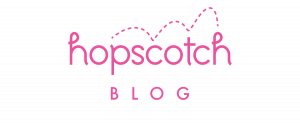


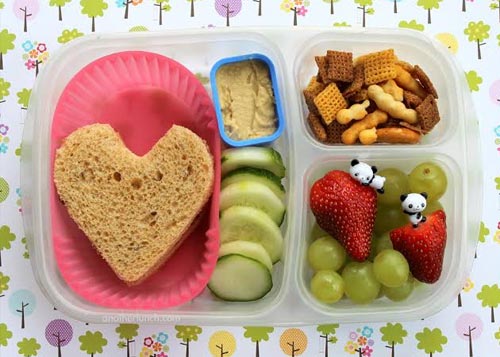



2 Responses